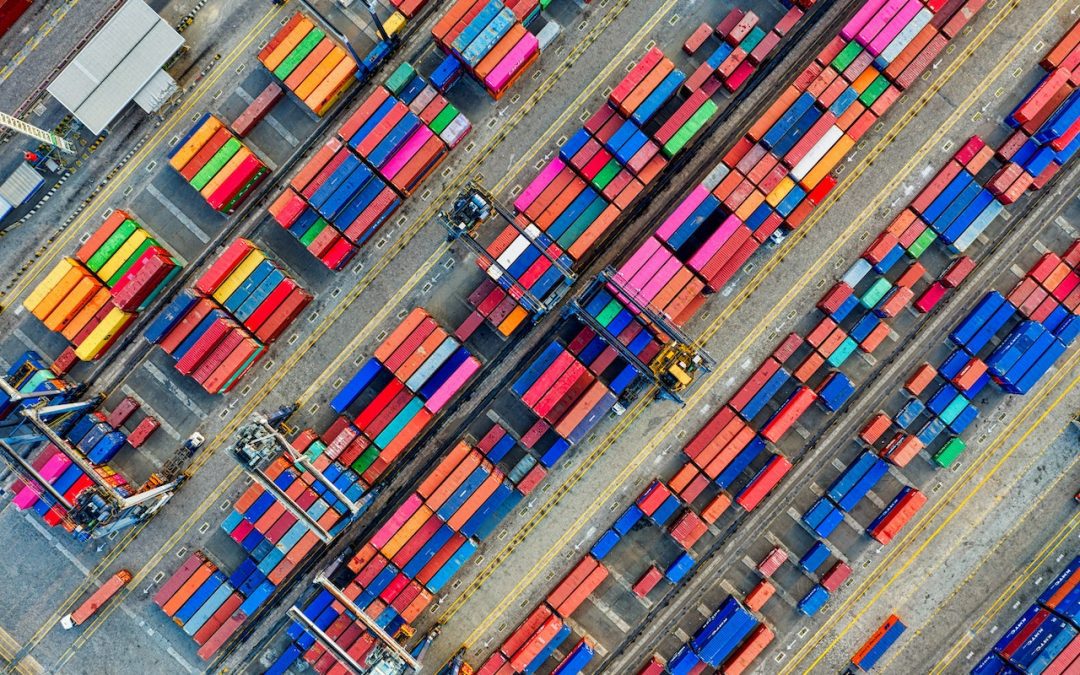Is container congestion slowing your lead times?
It’s one of the biggest problems causing delays in shipping all around the globe, and it’s highly likely to affect how fast your consignments reach their destination.
Read on to find out exactly what we’re talking about.
What is Container Congestion?
Container congestion is very similar to road traffic, just on a much bigger scale.
It happens when too many ships need to dock and unload (or load) at ports that can’t handle the capacity because they’re already full.
Carrier ships can arrive holding 10,000 to 20,000 containers in one shipment, and unloading these can take up to three business days. So, if a vessel loaded with containers, or a vessel waiting to be loaded, arrives at a busy port where no berths are available for it to dock, it has to wait at anchorage until one becomes available.
When port congestion is a problem, many container ships can wait up to two weeks just to dock.
Causes of Congestion
Port congestion is highly frustrating for everyone involved and directly impacts your supply chain. Customers end up waiting weeks for their goods, and shipping companies pay increased freight rates and operational charges to cover the cost of the long delays.
And, as global trade and demand for goods continue to skyrocket, it’s only getting worse.
Let’s take a look at some of the reasons it’s happening:
Lack Of Digitisation
The maritime sector hasn’t seen enough investment over the last 15 years to match the demand it faces. It needs to get smarter, and fast. There has been a call for the integration of digital strategies for a long time, and it’s getting more desperate as problems like container congestion become more debilitating.
Weather
The shipping industry is constantly at the mercy of adverse weather conditions. All it takes is for a storm to rage in the wrong place of the world, and the knock-on delays can be astronomical. More than 3,000 TEUs fall into the ocean every year due to weather events!
Strikes
Rail and port workers are among the groups of professionals taking strike action over pay, jobs and working conditions.
Large and ongoing disputes take lots of workers out of the equation, meaning there are even fewer staff members available to help pack, unload, check documents, clear cargo through customs and get it moved on to free up port space.
Driver And Equipment Shortages
Many countries receive more imports than they export, and if this cargo can’t be docked and unloaded quickly, a domino effect quickly comes into force.
When there aren’t enough trucks, drivers or chassis (the trailer frame a truck uses to move containers), this has a direct influence on a port’s ability to move goods quickly enough. The shortage of HGV drivers, brought about by the pandemic, means there aren’t enough trucks available to move the cargo away from the port.
People Are Buying More Goods
The demand for goods is at an all-time high. The sheer amount of goods being imported and exported is huge, and the industry isn’t able to support it the way it used to. When you combine capacity problems with the causes listed above, it’s not hard to see why port congestion is snowballing.
What Container Congestion Means For Your Cargo
If a port is backed up or otherwise extremely inefficient, this runs riot through the whole supply chain, affecting shippers, consumers and retailers.
Not only does container congestion lead to significant delays in wait times for consignees and consumers, but it also generates extra costs for everyone involved because a vessel waiting at anchorage will need to pay escalating bills for port services and fuel usage.
The reduced capacity of ports around the world, therefore, has a knock-on effect of increasing freight rates and shipping times.
What Can You Do?
It’s a good question. If port congestion is a problem that isn’t going to disappear overnight, what exactly can you do if you’re a business owner in the shipping industry?
(Beyond waiting around for the development of a smart, digital shipping logistics system, that is).
The safest thing you can do to combat container congestion challenges is to find a trusted freight forwarder who has a large-scale logistics network. A forwarder with a good reputation and lots of contacts will be able to get their hands on crucial shipping information ahead of time and expertly navigate delays, getting your cargo to its destination as quickly as possible.
Not sure you’re working with the right freight forwarder? Worried about incurring extra costs due to port congestion? Contact Millennium today for expert advice and a friendly ear.

